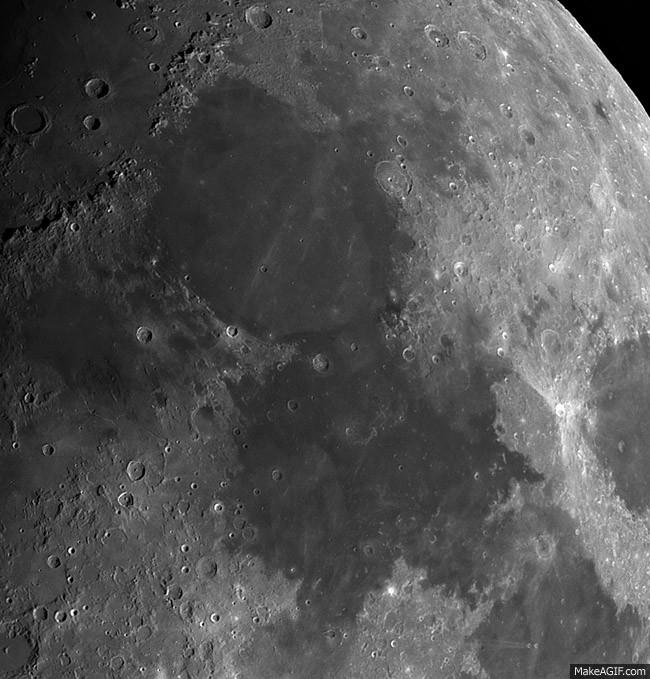January 8, 2023
Psychedelic
Originally published February 14, 2013

image by Jose Cabello, Málaga, Spain
Jose finds more color in the Moon than nearly anyone else. His saturated images are almost art. Like most amateur color images, the lack of calibration makes it difficult to interpret the colors in terms of known compositions. But the images do serve to identify surfaces that reflect light differently and should be investigated further. The best known color contrast is the difference between most of Serenitatis - here pink - and its margins and nearly all of Tranquillitatis - blue. It is known that Serenitatis lavas are poorer in titanium than those in Tranquility. Jose's image shows that the ejecta of Aristillus are blue, suggesting that beneath the pink (low titanium) Imbrium lavas are ones more like the blue ones around the edges of Serenitatis. Another crater surrounded by material that differs in color from nearby regions is Macrobius, just west of Crisium. Macrobius is relatively fresh but has lost its rays, so perhaps it impacted into an island of green material. I wonder if the Macrobius patch of green and another nearby one are crustal materials that haven't been covered by dark blue basin ejecta from Crisum and Serenitatis? The rays of Proclus are quite blue, looking like they excavated the putative basin blue material. But the total lack of blue in the ray-excluded zone west of Proclus (Palus Somni) needs an explanation for I would expect it to be Crisium ejecta too. Take a look around other local color contrasts here and see if you can interpret them.
Chuck Wood
Note: The West Virginia public broadcasting station interviewed me about the 21st Century Atlas of the Moon - you can listen to it here.
2nd Note: If you want a more romantic Moon for Valentine's Day ...
Technical Details
ByN está tomada con un Astromaster90 y dmk21au618; la toma saturada está tomada con SCT8" y dbk21af04.
Practice your Spanish - ByN = black and white.
Related Links
21st Century Atlas charts 7, 8, 11 & 12.
Yesterday's LPOD: Sunset Ridges
Tomorrow's LPOD: No Longer Unremarkable
COMMENTS?
Register, Log in, and join in the comments.



